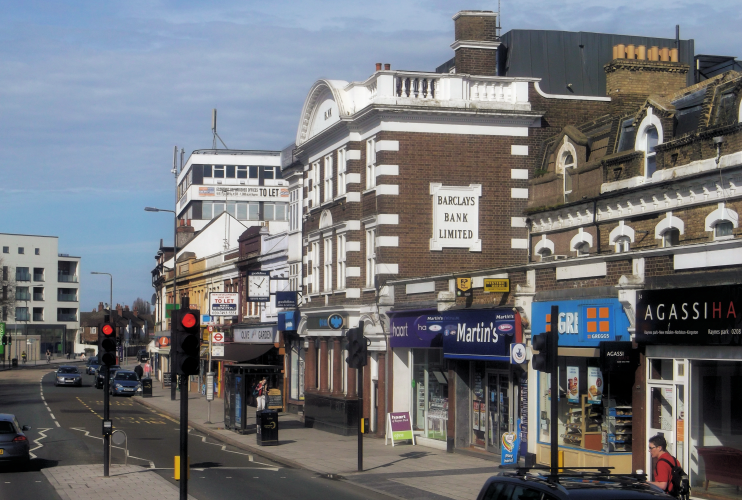Raynes Park
Raynes Park, Merton
To some an enduring community, to others an ‘underwhelming commuter suburb’, situated one-and-a-half miles south-west of Wimbledon

Archaeological digs have revealed evidence of Bronze Age human activity and the summer grazing of livestock, but not of continuous habitation at that time, which is understandable given the propensity of the low-lying clay terrain to flooding – a vulnerability that persists to the present day. Remnants of Romano-British pottery and tiles and medieval roof tiles indicate that the area may have been inhabited for the past 2,000 years or so – though very sparsely for most of that time.
Edward Rayne owned and managed Park House Farm from 1822, dividing the land into three ‘parks’: for pasturing sheep and cows, for growing peas, turnips and swedes, and for producing hay for local horses. After his sudden death in 1847, Rayne’s widow retained the farm until her son’s financial mismanagement forced her to sell to the lord of the manor of Morden, Richard Garth, in 1867.
Garth laid out Grand Drive and in 1871 funded the opening of a station, named after the farm’s former owner. Poor market conditions restricted property sales, so Garth leased some of the land as playing fields and a golf course.
A few shops and houses were built in the 1880s, but it was not until the extension of Wimbledon’s Worple Road to Raynes Park in 1891 that growth began to pick up and two shopping parades were built opposite the station. Nevertheless, it was several decades before the area was fully built up, despite the construction of the Raynes Park Tavern (shown below) in 1904 and the arrival of tram services in 1907.

With plenty of space still available for non-residential purposes, Carters Tested Seeds purchased 19 acres west of West Barnes Lane in 1909 and built a large complex of laboratories, offices and workshops. (Carters really did test their seeds.)
The largest of the area’s speculative developers was George Blay, who bought the Cannon Hill estate in 1924 and obtained a government subsidy to build freehold houses. Firstway was the first road he laid out, followed by an extensive series of other ‘ways’. The former golf course that lay west of Grand Drive is remembered in the names Greenway, Fairway and Linkway.
Raynes Park county school for boys opened in 1935 and has since become Raynes Park high school, a mixed comprehensive.
Carter’s left Raynes Park in 1966 and the council acquired the site for housing, laying out streets with names ending in ‘Gardens’. Remarkably, that was the last time Raynes Park experienced anything approaching radical redevelopment – making this one of the most unchanging places in a rapidly evolving metropolis. There are no abandoned hospitals ripe for conversion to luxury apartments (unlike in Copse Hill to the north) nor neglected estates of council flats to knock down and rebuild. With few brownfield sites, there has been – and is scope for – very little new construction beyond the occasional private road (like Greenview Drive), a budget hotel above the Co-op or a rebuilt library or two with some flats on top.
Some newcomers have arrived from far-flung places like South Africa, Sri Lanka and South Korea but the demographic profile and population density remain much the same as they were ten or twenty years ago – certainly compared with most other parts of built-up London.
The Jeff Beck Group’s 1971 album Rough and Ready includes the jazz-fusion instrumental ‘Raynes Park Blues’, alternatively titled ‘Max’s Tune’, in a reference to keyboard player Max Middleton, who wrote the piece while he was living in the area.
